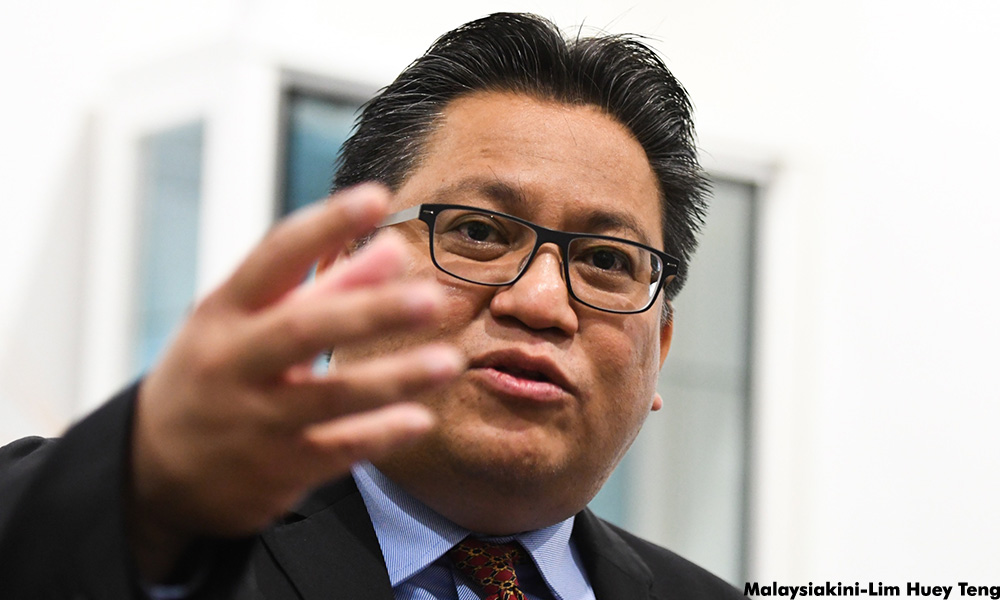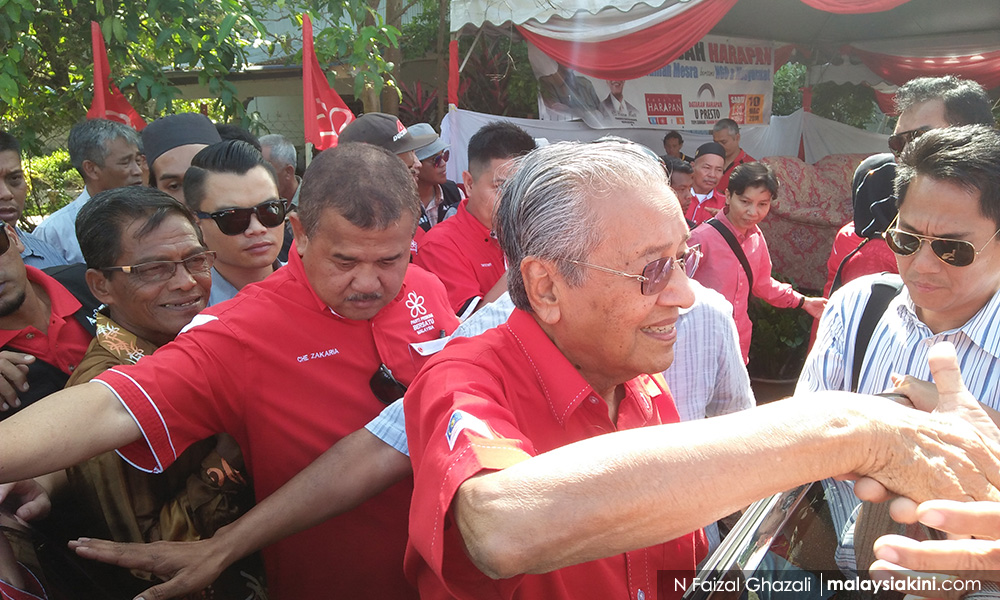 -S.Thayaparan, April 3, 2013.
-S.Thayaparan, April 3, 2013.
‘If losers can exploit what their adversaries teach them, yes, losers can become winners in the long term.’
– David Mitchell (Cloud Atlas)
COMMENT I have refrained from commenting on Hindraf and “the Indian” problem for reasons which are beyond the scope of this article but Ram Anand’s op-ed piece on the subject deserves attention and a counter opinion if only to provide the necessary context for readers interested in a nuanced perspective.
Reading Anand’s piece, the great Australian journalist John Pilger’s dictum comes to mind (from his book ‘Hidden Agendas’) which is, “It is not enough for journalists to see themselves as mere messengers without understanding the hidden agendas of the message and the myths that surround it.”
The piece ‘Wither the Indian middle ground politics’ is mired in the kind of subtle partisanship that reduces the issues of the Indian community and the role of Hindraf into a simplistic problem that could be possibly resolved if only Hindraf made the “sensible choice” when and if they (Hindraf and the Indian community) make a stand.
This particular piece is one in a line of many that include pieces from former Hindraf partisans who have undergone political conversions, left-leaning progressive academics and Indian opposition personalities whose main aim has been to provide a critique of Hindraf in a manner that bolsters the Pakatan Rakyat narrative of an “inclusive” national agenda.
 However, some still maintain faith with Hindraf. While others have allowed partisan fever to overwhelm their rational defences, these men and women continue to speak for Hindraf and in doing so, speak up for all marginalised communities. Dr Lim Teck Ghee is one such person.
However, some still maintain faith with Hindraf. While others have allowed partisan fever to overwhelm their rational defences, these men and women continue to speak for Hindraf and in doing so, speak up for all marginalised communities. Dr Lim Teck Ghee is one such person.
Lim, an articulate defender of Hindraf and indeed all marginalised peoples, observes in his piece, ‘Keeping faith with Hindraf and Waytha Moorthy’ (left):
“Hindraf has fallen foul not only of the official and BN propaganda machine but it has also now been demonised in the alternative Internet media by cynics who feel that Hindraf’s call to the political parties to support its blueprint – as a pre-condition for its political support in the coming elections – is a betrayal of the reform movement.”
The handout culture
The Anand piece for me is problematic for a number of reasons. Firstly, the writer never attempts to define “middle ground politics” and leaves it to the readers to define the term for themselves and in this partisan atmosphere; this should be anathema for obvious reasons.
However just in case some readers cannot fathom these “obvious reasons”, I will attempt to spell it out for them. In these partisan times, if one is going to refer to “middle ground politics”, one had better define it simply because it is the nature of partisans to claim the term as their own and their definition is most often at odds with the intent and spirit of the concept. I would go so far as to say that I am guiltier of abusing this term (as a partisan writer) than Anand.
The writer hints that the middle ground is one of “self-efficacy” but never attempts to explain how this is the middle ground (which every party needs to sustain in order to get a mandate) or how either political alliance through their political rhetoric or individual manifestos exemplify this stand.
Second, throughout his piece the writer conflates the Indian community with the political parties that supposedly represents them and uses one as a convenient stand in for the other, when it suits his purposes.
 An example of this would be the writer’s anecdote of his meeting with an Umno representative and the MIC lackeys who pick up the crumbs off his floor. The narrative then switches to the point that the Indian community (like the MIC) is mired in a handout culture.
An example of this would be the writer’s anecdote of his meeting with an Umno representative and the MIC lackeys who pick up the crumbs off his floor. The narrative then switches to the point that the Indian community (like the MIC) is mired in a handout culture.
Therefore, in this instance we have the servility and corruption of a political party that is supposed to represent the Indian community juxtaposed with the community itself that is merely engaging in the same behaviour of every other community when it comes to the handout culture of this land.
Has anyone ever been to these so-called service centres? Because if you have, the behaviour of disenfranchised people be they Malays, Indians and Chinese looking for a quick handout from the minions of the political overlords of this country would be on full display. How exactly is this solely an Indian “problem”?
But more importantly, the handout culture is the core component of how either alliance interacts with the Malaysian polity. Any objective observer who were to look into the policies of either BN or Pakatan, he or she would discover that neither alliance intends to change this dynamic beyond the semantic argument of a class as opposed to a race-based approach.
Not to mention Pakatan has claimed that it would cancel the loans of the PTPTN scholars or some such, which is just one example (let’s not get into the whole goodie bag list in the manifesto) of the way how the handout culture will continue to be promulgated in this country.
 Of course, the writer’s anecdote subtly feeds into the stereotype of a certain class of Indians that is grist for the mill for the class conflict between those middle-class Indians who support Pakatan and the intransigent Hindraf who are alleged sub rosa provocateurs for BN.
Of course, the writer’s anecdote subtly feeds into the stereotype of a certain class of Indians that is grist for the mill for the class conflict between those middle-class Indians who support Pakatan and the intransigent Hindraf who are alleged sub rosa provocateurs for BN.
According to the writer’s analysis, the easiest way to appeal to Indians (“who are suckers for attention”) is through money. Hasn’t everyone seen the diverse polity that shows up to collect the BR1M handouts? It would seem that most Malaysians regardless of race are suckers for money.
Not to mention the cheap money politics that infest Umno as exemplified by RM50 notes strewn about as reported in the alternative press during elections, which would mean that the Malays are suckers for (money) attention too. Maybe the only community which is not interested in money is the Chinese community. Oh, wait.
Cultural disconnect
When the writer’s guns are trained on Hindraf and the lack of cohesion in the Indian community, things get extremely complicated and it would take an objective critic to weed out the canards from the axioms. I am not such a critic but I will attempt to examine the issues to the best of my abilities.
The writer says, “Hindraf seems to have deviated from its original path. After spending years demonising Umno-BN as an extension, the movement has softened its stand of late as it attempts to get either one of BN or Pakatan to endorse its blueprint.”
Now exactly what path has Hindraf deviated from? Are the issue they raise not the same as they did when Hindraf were the darlings of the oppositional establishment in this country?
Or does softening their stand mean that Hindraf has compromised on its divisive polemical rhetoric that alienated many of their supporters? If so is not this a counter point to the one raised by the Hindraf supporter who said, “They keep calling everyone mandores (Tamil for powerless messengers). We need to get things done sometimes, and not antagonise everyone. We asked them to stay away.”
It all gets very confusing. The writer talks of the splintering of Hindraf and the numerous political parties that are supposed represent the tiny minority who are the Indians but he never once examines the agendas of those who nurture such divisions, as Umno and their Makhal Sakthi clone or Pakatan Rakyat and their Indraf fiasco. As usual, the blame is laid squarely on the Indian community, who had very little to do with the political manoeuvrings of the political elites.
The whole piece is littered with the “inclusive” agenda of the Pakatan as when the writer relates another anecdote this time with an opposition representative: “I have a hard time making them understand this ‘Look, if I give you this money, I need to start giving to everyone for the same reason. I’m answerable to all people here, not just you.”
If objectivity were the goal, the writer should query what kind of disbursements that these kinds of service centres usually make? Is there a difference in what the various communities ask for; is there a difference in the requests made to Malay, Chinese and Indian opposition representatives?
And if so how does this relate to the Indian community but more importantly this opposition representative should have been questioned as to how his coalition intends to lessen the dependence on handouts or define the handout culture in class terms as opposed to race dynamic.
 The writer’s point about the cultural disconnect between Pakatan Indian representatives and the community they claim to represent – “BN Indian leaders appear content to keep Indians as dependent entities who will rejoice when given money, the Pakatan’s Indian leaders are so detached from the Indian grassroots that only a handful of their top leaders can converse in Tamil comfortably with the stateless people they want to represent” – is indicative of the larger culture war that separates the middle-class Indian who support Pakatan and the disenfranchised class easily swayed by the temporary relief offered by BN.
The writer’s point about the cultural disconnect between Pakatan Indian representatives and the community they claim to represent – “BN Indian leaders appear content to keep Indians as dependent entities who will rejoice when given money, the Pakatan’s Indian leaders are so detached from the Indian grassroots that only a handful of their top leaders can converse in Tamil comfortably with the stateless people they want to represent” – is indicative of the larger culture war that separates the middle-class Indian who support Pakatan and the disenfranchised class easily swayed by the temporary relief offered by BN.
It is a shame that the writer overlooks Hindraf’s raison d’être of representing the disenfranchised of the Indian community in his agenda for political and cultural conformity through a choice made, by damning the strategic move of negotiating with the powers-that-be either Pakatan or BN as “putting up its blueprint to the highest bidder”.
S THAYAPARAN is Commander (rtd) of the Royal Malaysian Navy.
























